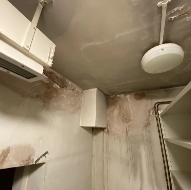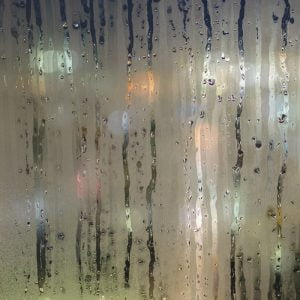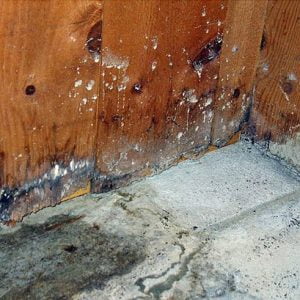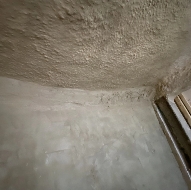Rising Damp
Dampness can be caused in numerous ways. One of the biggest problems we see in London is rising damp. If we don’t deal with wet walls in our houses as soon as we notice them, moisture will likely begin to spread through the walls, leading to costly structural issues and a heightened risk of respiratory problems.
Rising damp usually starts from moisture on the ground. Then, it slowly moves through the cracks and pores of a building’s brickwork. Without professional treatment for wall dampness, DPC injections, and proper mould prevention, it can become a severe concern.
Spotting rising damp is reasonably straightforward. If you see white or grey moisture stains on your walls, it is probably from the salt that the water carries with it. Additionally, there are other telltale signs worth looking out for to ensure rising damp is dealt with promptly.
You may have rising damp if your property shows any of the following signs
- Mould or mildew on walls
- Powdery mineral deposits, often in a flower shape
- Yellow/brown marks on walls
- Wallpaper peeling away
- Rotten skirting board timber
- Air bubbles and blistering of paintwork
- A permanent damp and musty smell
- Deterioration of lower fixtures and fittings
If you answered 'yes' to any of these, your London property could be suffering from rising damp.
Watch this video to find out more!
What is rising damp?
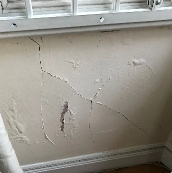 Rising damp is the process where underground water surrounding buildings penetrates the porous material of the structure, specifically the building’s walls.
Rising damp is the process where underground water surrounding buildings penetrates the porous material of the structure, specifically the building’s walls.
Excess underground water and leakages from other sources can often expose brick and masonry to enough moisture that it wicks its way upwards. This reaction is known as a capillary reaction and is very much like how a cloth touching a pool of liquid will draw up the fluid, even if the cloth is entirely vertical.
Most modern properties built within the last century or so will have a layer built into the walls near the ground to stop this process in its tracks, which we call a damp-proof course (DPC).
Rising damp causes
The main property issues leading to rising damp are:
- DPC faulty, absent or deteriorated
- Improperly installed DPC
- Adjoining structure higher than DPC
- Water leakage from plumbing issues
- Poor drainage of local land
- Faulty guttering, fascias or downpipes
- Damaged or poorly fitting roofing
- Local flooding
As you can see, there are several issues that can lead to rising damp in a property. When we come over to assess the moisture in your walls, we will do much more than develop a tailored treatment for wall dampness. Our team of experts is dedicated to preventing the problem from coming back. We will give every area of the property a once-over, so you can make any necessary adjustments. As part of our commitment, we also offer a 30-year guarantee for all work carried out, so you can always trust what we do.
What problems can untreated rising damp cause?
If your home is currently showing any signs of damp you will be well aware how unattractive it looks but it's not just an aesthetic issue. Persistent damp often gives rise to mould, affecting respiratory systems and contributing to conditions such as asthma.
If left untreated, damp can spread throughout your property, causing widespread structural and visual damage, not forgetting the negative effects on the value of your home.
Here is a breakdown of what untreated rising damp can do to your property:
Deterioration of plaster and brickwork – Eventually, the walls inside a house will begin to deteriorate, which can compromise the structural integrity of the building.
Wood Rot – When rising damp starts, it will rot skirting boards, and over time, it will get to the supporting beams of a building. Additionally, it can cause floorboards to swell and sometimes collapse.
Mould and Mildew – Rising damp creates the perfect environment for mould and mildew. Mould in our homes can potentially cause damage and look very unsightly.
Health Issues – When we are exposed to dampness and mould on our walls, we are far more susceptible to numerous health issues. Mould spores can trigger wheezing, coughing, and allergies, and can also exacerbate issues, such as asthma. If a person is exposed regularly, they will develop a weakened immune system, causing them to become sick more easily.

Reliable Guarantee

Rapid Diagnosis

Onsite Estimates

Transparent Pricing

Trusted Provider
FAQ's
Rising damp is caused by moisture below the surface that then travels up into a building through its walls. Any property in London is particularly prone to the issue owing to the high-water levels below the ground and must therefore continually inspect their property.
It is normally a fair indication that work needs to be done relating to rising damp when tide marks start appearing on walls and wallpaper starts to peel. Paintwork will start to suffer from discolouration, while musty smells are often accompanied by salty white deposits.
The causes are usually down to older properties not having a damp proof course, or DPC, while those that already have might have had it installed poorly, which has resulted in decay or damage. It needs putting right, with a call to Damp Proof London guaranteeing a quality job that is guaranteed to last for decades.
The masonry of a structure can be damaged by rising damp, which can lead to big issues needing to be put right if not dealt with before it creates havoc. Mould and mildew thrive in such conditions, affecting the air quality and can lead to health issues, particularly for those who have respiratory conditions and allergies.
No. Condensation is usually found higher up a wall or on a surface, which is caused by humid conditions inside a property because of poor ventilation, whereas rising damp brings salts up from below the earth's surface and affects lower down the wall.
It certainly pays to make regular inspections, particularly of older buildings in London, where the damp can get inside the property with regular occurrence. It can affect the interior of those structures that have an internal wall that is built from ground level.
At London Damp Proofing, we will send someone round within two working days to deliver a reliable diagnosis. We at London Damp Proofing also provide an estimate as to the cost of the work, which will involve injecting a chemical DPC and might also see us install a damp proof membrane.
No. Not under any circumstances. The paint will peel in the same way that the previous layer has, and rather than masking the issues, it will lead to the problems increasing. Call out the professionals every time rather than attempt a botched job.
This varies depending on the severity of the issue and the size of the property. It can be anywhere between a few hundred and a few thousand pounds. One thing guaranteed when calling 020 7593 8030 is that transparent pricing will be delivered.
How can London Damp Proofing help?
Get in touch with us today and we will aim to solve your damp issues as soon as possible. Our trained team can visit your London property at a time to suit you.
With prompt analysis, diagnosis and application of our specialist treatments, the causes of damp can be eradicated and any structural damage repaired.




